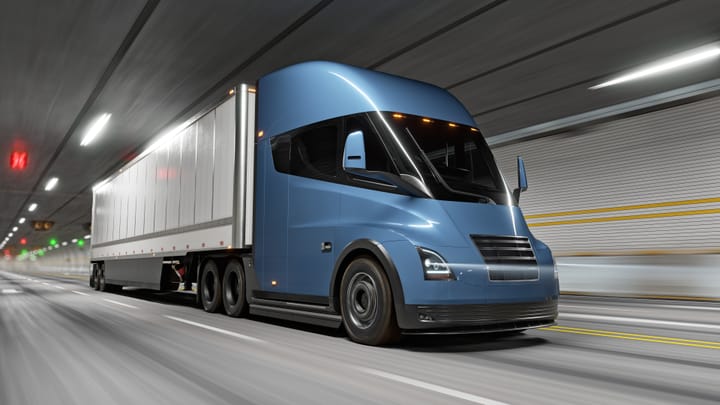Plus: Driver retention stagnates | CDL rules you may not know
Technology is unlocking all kinds of potential safety and efficiency gains in trucking. We take a look at the benefits of telematics, plus a new startup that's using AI to fill empty trailer space.
But first, it's a scary situation when a driver dozes off at the wheel.

FAQs. This article offers a helpful breakdown of the latest CDL rules—what's required, and how they might impact the industry.
Truck therapy. A "mockumentary" that might hit a little too close to home for those involved in trucking or drayage ops. The video might make you laugh, or cry, or both!
A trucker's story. From a childhood fascination with trucks to becoming an owner-operator, this trucker is living out his dreams.
Safety first. Sensors, systems and cameras are all designed to make life on the road safer. But sometimes, as this driver shares in a reel, the way the systems react actually makes driving less safe.

63%
The percentage of logistics companies that say recruiting and retaining drivers has stagnated or worsened over the last year. (Tech.co)

Are telematics trucking's friend or foe?
Telematics software logs enormous amounts of data about a fleet, helping execs pinpoint inefficiencies or safety concerns. But could that same data be used against a fleet, especially in the case of a legal battle?
According to Rob Abbott, VP of Fleetworthy, the pros of collecting data outweigh any cons. "It is far better to obtain this powerful information to reduce crashes and claims costs," he writes. But he adds, it's important to follow a few steps to manage data, like identifying vulnerabilities and using the info to craft a positive narrative.
Why this matters: While some trucking execs may shy away from data, the information can go a long way toward actually proving a motor carrier's safety culture in the event of a legal issue—and correcting any improper behavior before a fleet gets to that point. (CCJ Digital)

FEEDBACK WANTED: DOT solicits input on how to reduce cargo theft
HEAD HONCHO: OOIDA pushes Senate to approve FMCSA admin
STOCK SURGE: Paccar stock price jumps on news of Trump truck tariffs
GROWING NETWORK: Wabash expands with new dealer relationship, parts and service center
FAIR LAW: New bill aims to protect trucking against frivolous lawsuits
ENFORCEMENT BLITZ: ICE arrests 130 truck drivers in three days

How SMBs can turn their challenges into opportunities
Across industries, small businesses are grappling with similar challenges. Inflation is a top concern, with tariffs exacerbating cost pressures. Hiring and skills gaps are also a challenge, with higher rates of unfilled jobs in the transportation sector. There's good news, though. Small businesses are in a particularly strong position to upskill their teams, as they tend to have greater operational flexibility and closer relationships with employees.
Why this matters: In some ways, it can feel reassuring to know that other small business owners are in the same boat. Those who can turn challenges on their head and transform them into opportunities, such as leveraging retention issues to create upskilling opportunities, will be well-positioned for success. (Chamber of Commerce)

Startup taps AI to connect shipments with truckload capacity
A new startup, which has just raised $4 million, is aiming to address inefficiencies in the trucking market. Oway uses AI, machine learning and telematics data from ELDs to match carriers with partial loads along the routes they're already traveling. The promise: an up to 30% increase in annual revenue for TL carriers.
Why this matters: The platform essentially allows carriers to do more with the same. If AI can help fill trailers, reduce empty space and even cut down on deadheading, it would result in major efficiency and financial benefits for trucking fleets. (FreightWaves)

Thanks for reading today's edition! You can reach the newsletter team at editor@theinsidelane.co. We enjoy hearing from you.
Interested in advertising? Email us at newslettersales@mvfglobal.com
The Inside Lane is curated and written by Shefali Kapadia and edited by Bianca Prieto.






Comments ()